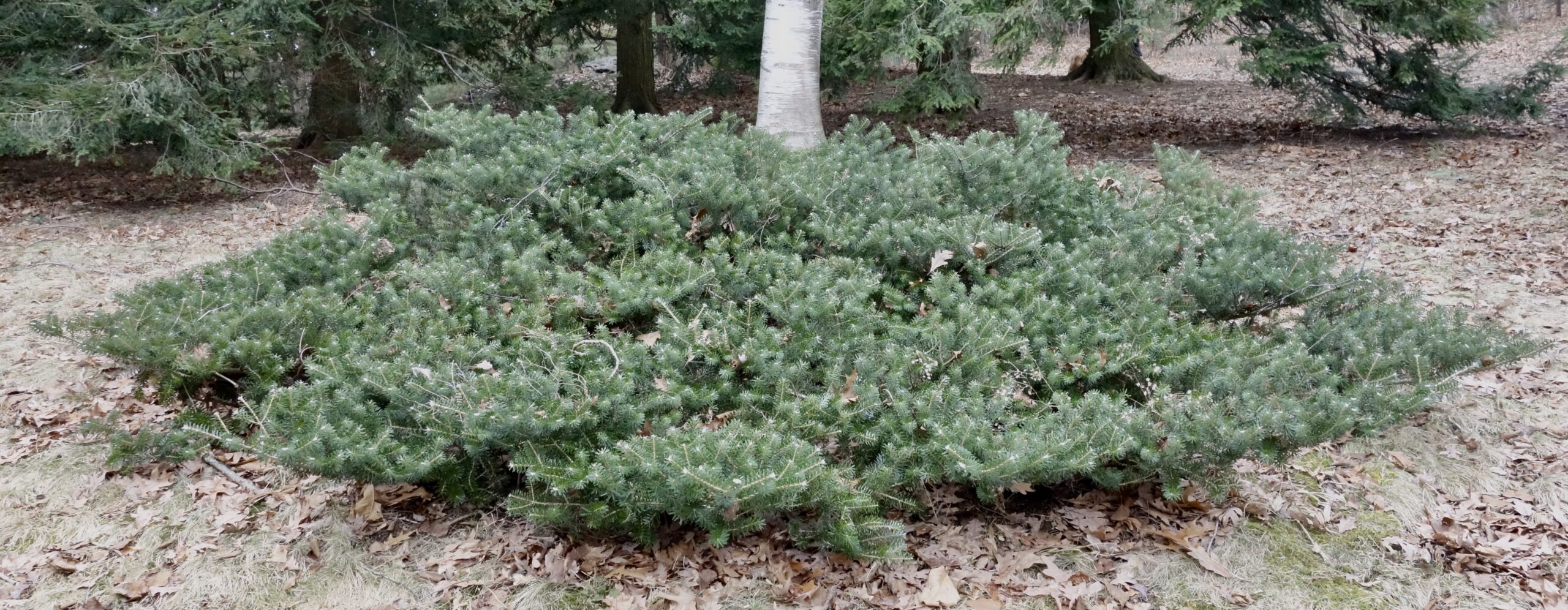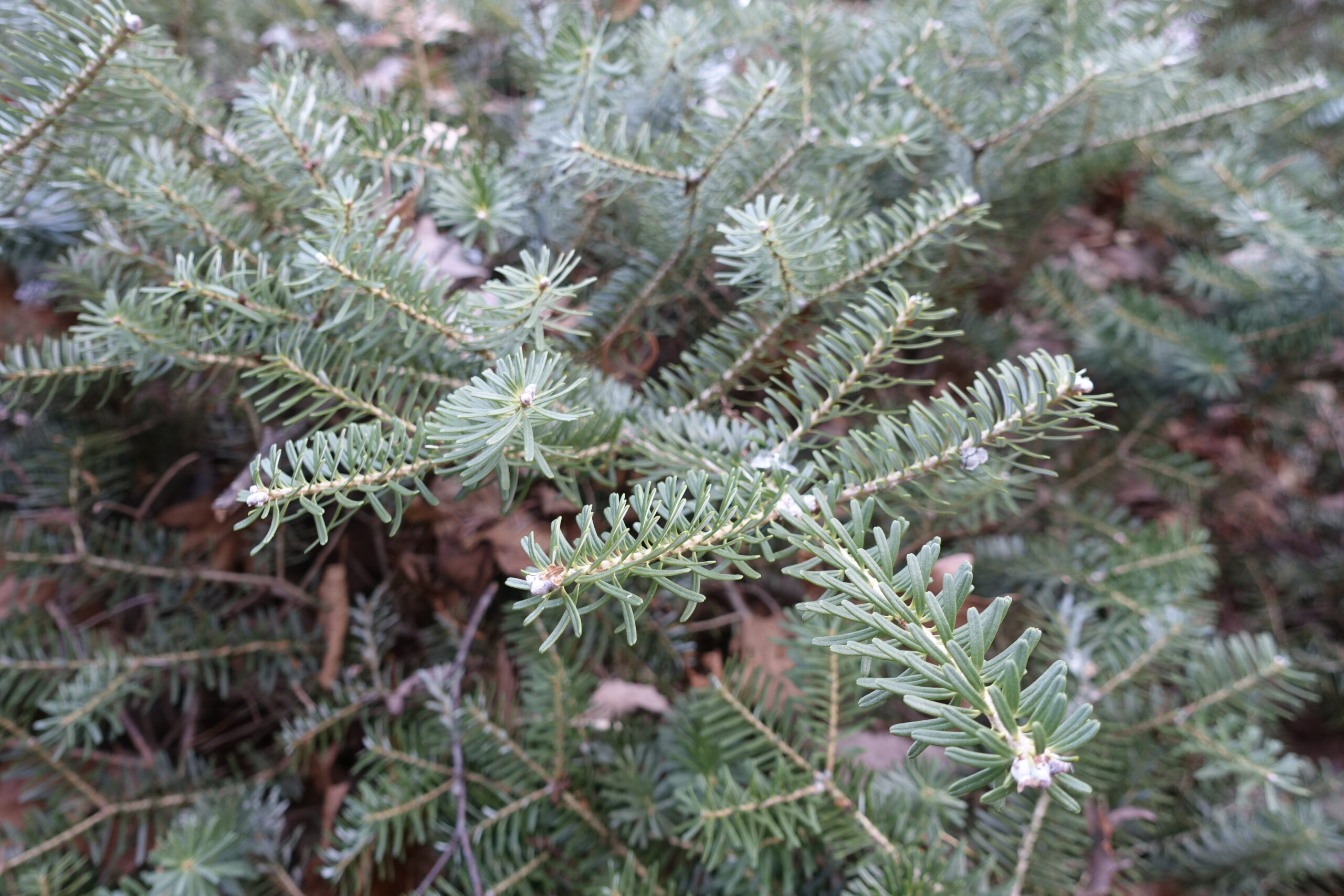‘Prostrate Beauty’ Korean Fir
Abies koreana ‘Prostrate Beauty’

- Accession Number
- The alpha-numeric value assigned to a plant when it is added to the living collection as a way of identifying it.
- Accession Date
- The year the plant’s accession number was assigned.
- Common Name
- The non-scientific name for the plant.
- Scientific Name
- The scientific name describes the species of an organism. The first word is the plant's scientific genus and the second is the specific epithet. This two-word binomial is sometimes followed by other taxonomic descriptors, including subspecies (denoted by "ssp."), variety (denoted by "var."), form (denoted by "f." or "forma"), and cultivar (denoted by single quotation marks).
- Plant Family
- The family to which the plant belongs.
- Propagation Material
- The first part (material code) describes the material used to create the plant. The most common codes are "SD" (seed), "EX" (existing plant), "PT" (plant), "CT" (cutting), "SC" (scion), "SG" (seedling), and "GR" (graft). The second part describes the lineage the plant is derived from. The last part describes the year of propagation.
- Collection Data
- The first part indicates provenance (place or source of origin) using a letter code ("W" = wild, "G" = garden, "Z" = indirect wild, "U" = uncertain). The second part lists the plant source. For wild-collected material, the collector, collection number, and country are given.
- Location
- The location of the plant on the landscape.
BIOLOGY DEPT., HARVARD UNIV.,
CAMBRIDGE, MASSACHUSETTS, U.S.A.
‘Prostrate Beauty’ is an ideal no maintenance ground cover with winter interest.
‘Prostrate Beauty’ was propagated from a lateral lower branch off a specimen at the Arnold Arboretum of Harvard University from an original collection made by Ernest Henry Wilson, a notable early 20th century plant explorer. Wilson and the Arnold Arboretum introduced Korean fir (Abies koreana) to the West in 1917. It is native to southern Korea and the volcanic island of Cheju Do up to elevations of 6,500 feet. The type specimen of Korean fir is in the Harvard University Herbaria in Cambridge, Massachusetts.
‘Prostrate Beauty’ Korean fir is an extremely dwarf form of the species. It is 4 to 5 times wide as it is tall. A plant originating in 1967 is only 2.5 feet tall at its highest point, with new growth toward the edge averaging only 12 to 18 inches tall. Typically, Korean fir grows 15 to 30 feet in height.
‘Prostrate Beauty’ appears very dense due to its compact growth. It has attractive dark green evergreen needles slightly less than 1 inch long with white stomatal bands underneath. Two-inch violet-purple cones borne upright on branches begin to form when the plant is young. It is an excellent addition to a dwarf conifer garden or can be utilized in foundation plantings where a low growing, spreading evergreen shrub is desired. ‘Prostrate Beauty’ is an easy to grow plant; it has no major issues, and little or no maintenance is required. Occasionally, leaders or vertical shoots may develop in mature individuals, which should be removed to retain the plant’s low stature. It may also know be known as ‘Compact Dwarf’ or f. prostrata.
Massachusetts
Viewing this plant in-person? Look for these defining characteristics:
About Our Collection
Fun Facts
Stats
- Living Specimens
- Specimens Dead or Removed
- First Addition
- Most Recent Addition
- Tallest Specimen



Living Specimens
| Plant ID | Accession Date | Received As | Origin | Source |
|---|---|---|---|---|



